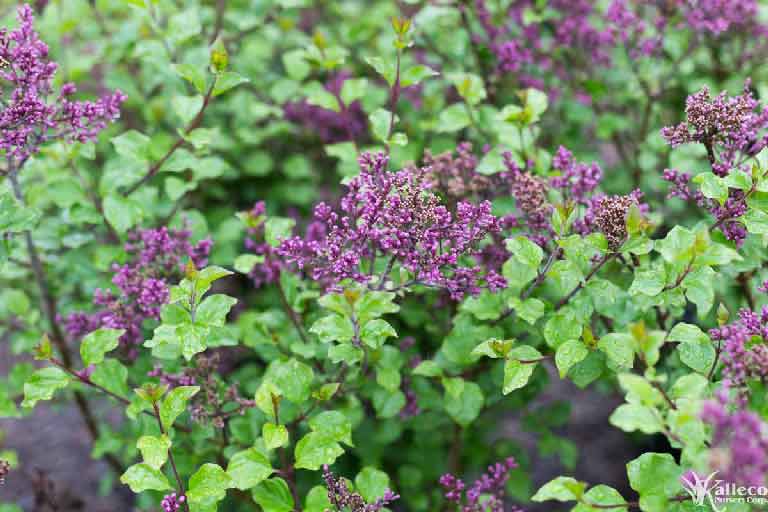The Ultimate Guide to Growing Miss Kim Lilac Companion Plants
Miss Kim Lilac Companion Plants: A Brief Overview
If you're looking for a beautiful and fragrant addition to your garden, look no further than Miss Kim lilacs. These hardy shrubs produce stunning purple flowers in late spring and early summer, filling your yard with their sweet scent. But did you know that Miss Kim lilacs also make great companion plants? By planting them alongside other compatible species, you can create a vibrant and healthy ecosystem that supports pollinators and other beneficial insects. In this guide, we'll explore some of the best Miss Kim lilac companion plants and share tips for growing them successfully.
Choosing the Right Companion Plants
Before we get into specific plant recommendations, it's important to understand what makes a good Miss Kim lilac companion plant. The key is to choose species that have similar growing requirements and complement the lilac's beauty and fragrance. Here are some factors to consider:
Growing Conditions
Miss Kim lilacs thrive in full sun to partial shade and prefer well-drained soil. When selecting companion plants, look for species that have similar light and soil preferences. Avoid plants that require excessively moist or dry soil, as they may compete with the lilac for resources.
Blooming Time
To ensure that your garden looks its best throughout the growing season, choose companion plants that bloom at different times than the Miss Kim lilac. This will create a dynamic display of color and texture that lasts all summer long.
Pollination Requirements
Many plants rely on pollinators to reproduce, so it's important to choose companion species that attract bees, butterflies, and other beneficial insects. This will help to ensure a healthy ecosystem and maximize the productivity of your garden.
Top Miss Kim Lilac Companion Plants
Now that you know what to look for in a companion plant, let's explore some of the best options for pairing with Miss Kim lilacs:
1. Russian Sage (Perovskia atriplicifolia)
Russian sage is a hardy perennial that produces stunning purple-blue flowers in late summer. Its feathery foliage pairs beautifully with the Miss Kim lilac's compact form, creating an eye-catching contrast. Russian sage also attracts pollinators and thrives in similar growing conditions to the lilac.
How to Grow Russian Sage:
Plant Russian sage in full sun and well-drained soil. Water regularly until established, then reduce watering to once per week. Prune back in early spring to promote healthy growth.
2. Spirea (Spiraea spp.)
Spireas are a popular choice for gardeners looking to add texture and color to their landscape. These deciduous shrubs produce clusters of pink or white flowers in spring and summer, complementing the Miss Kim lilac's purple blooms. They also attract pollinators and thrive in similar growing conditions.
How to Grow Spirea:
Plant spirea in full sun to partial shade and well-drained soil. Water regularly until established, then reduce watering to once per week. Prune back in early spring to promote healthy growth.
3. Catmint (Nepeta spp.)
Catmint is a low-maintenance perennial that produces beautiful spikes of lavender-blue flowers in early summer. Its aromatic foliage is attractive to cats and repels many insect pests, making it a great choice for organic gardeners. Catmint also attracts pollinators and thrives in similar growing conditions to the Miss Kim lilac.
How to Grow Catmint:
Plant catmint in full sun to partial shade and well-drained soil. Water regularly until established, then reduce watering to once per week. Prune back after blooming to promote healthy growth.
4. Coreopsis (Coreopsis spp.)
Coreopsis is a cheerful perennial that produces bright yellow or red flowers throughout the summer. Its soft, fern-like foliage pairs beautifully with the Miss Kim lilac's compact form, adding texture and interest to your garden. Coreopsis also attracts pollinators and thrives in similar growing conditions to the lilac.
How to Grow Coreopsis:
Plant coreopsis in full sun and well-drained soil. Water regularly until established, then reduce watering to once per week. Deadhead spent blooms to promote healthy growth.
By choosing the right companion plants for your Miss Kim lilacs, you can create a vibrant and healthy ecosystem that supports pollinators and other beneficial insects. Whether you opt for Russian sage, spirea, catmint, coreopsis, or another compatible species, be sure to provide adequate light and water to help your garden thrive. With the right care and attention, your lilacs and their companions will provide years of beauty and enjoyment.
FAQs
Q: How do I plant Miss Kim lilacs?
A: Plant Miss Kim lilacs in well-drained soil and full sun to partial shade. Dig a hole twice as wide as the root ball and slightly shallower than the depth of the container. Backfill with soil and water thoroughly.
Q: When do Miss Kim lilacs bloom?
A: Miss Kim lilacs typically bloom in late spring to early summer, producing fragrant purple flowers that last for several weeks.
Q: How do I prune Miss Kim lilacs?
A: Prune Miss Kim lilacs in early spring before new growth appears. Remove any dead, diseased, or crossing branches, and trim back the tips of healthy branches to promote bushier growth.
Q: Do Miss Kim lilacs attract pollinators?
A: Yes, Miss Kim lilacs are attractive to bees and other pollinators, making them a valuable addition to any garden ecosystem.
Q: Can I grow Miss Kim lilacs in containers?
A: Yes, Miss Kim lilacs can be grown in containers as long as they have adequate drainage and receive enough sunlight. Be sure to water regularly and fertilize once per year to promote healthy growth.










Post a Comment for "The Ultimate Guide to Growing Miss Kim Lilac Companion Plants"